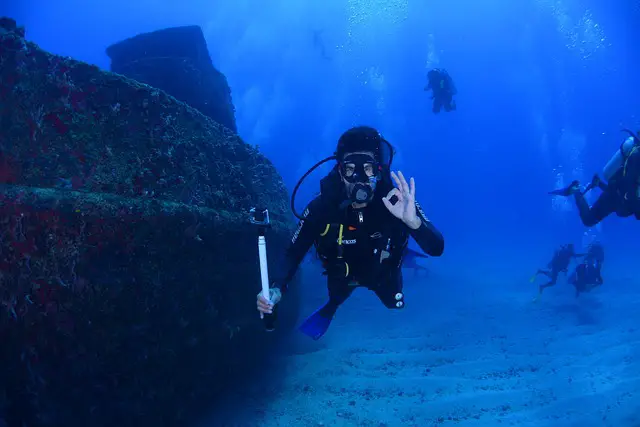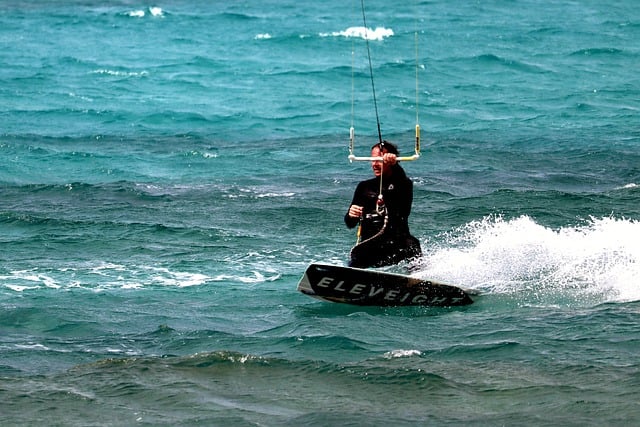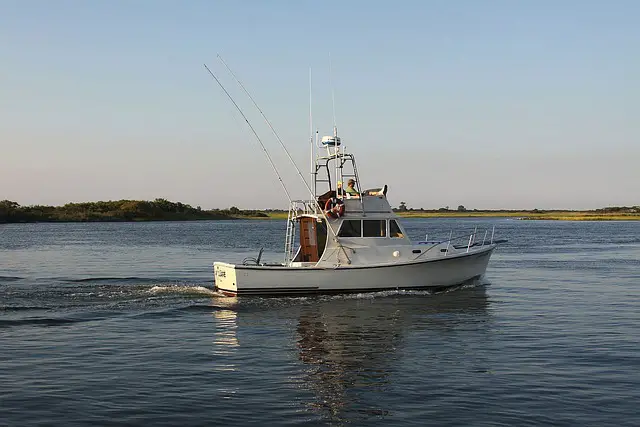Top Must-Have Scuba Diving Gear: Essential Equipment for Safe and Enjoyable Dives

Scuba diving is an exciting sport that allows you to experience the beauty and wonder of the underwater world. However, to ensure that you have a safe and enjoyable diving experience, it’s essential to have the right equipment. From beginners to advanced divers, choosing the proper scuba gear is key to safety, comfort, and an overall better experience. This guide will walk you through the essential scuba diving gear and how to choose the best equipment to suit your needs.
Diving Mask: Keeping Your Vision Clear Underwater
Why a Diving Mask is Important
A diving mask is a must-have to see clearly underwater. It allows you to view the underwater scenery while protecting your eyes from the water. Choosing the right mask will enhance your diving experience and make your dives more enjoyable.
How to Choose a Diving Mask
- Fit: The most important factor is how well the mask fits your face. It should create a proper seal to prevent leaks. Test the fit by placing the mask on your face and gently inhaling through your nose. If the mask stays in place without holding it, it’s a good fit.
- Single vs. Double Lens: A single-lens mask provides a wider field of view, while a double-lens mask is often more durable and offers better focus.
- Anti-fog Features: Masks with anti-fog coatings help maintain clear vision, which is especially useful for longer dives.
Recommended Brands and Price Range
| Brand | Features | Price Range |
|---|---|---|
| Cressi | Wide field of view, excellent fit | $30 – $60 |
| Aqua Lung | Lightweight design with anti-fog features | $40 – $80 |
| TUSA | High-quality lenses and various designs | $50 – $90 |
Pro Tip: Always try on a mask before purchasing to ensure a snug fit and no leakage. Make sure it provides comfort even after extended wear.
Snorkel: Supporting Efficient Breathing
The Role of a Snorkel
A snorkel allows you to breathe comfortably at the surface without raising your head out of the water. It’s particularly useful when swimming face down for extended periods and is essential for beginner divers.
Types of Snorkels
- J-shaped Snorkel: Simple design, easy to use, and great for beginners.
- Purge Valve Snorkel: Equipped with a valve that allows water to drain quickly if it enters the snorkel. This feature is ideal for beginners who are new to snorkeling.
- Dry Snorkel: Prevents water from entering, making it easier to breathe. It’s great for diving in choppy waters or long snorkel sessions.
Recommended Brands and Price Range
| Type of Snorkel | Features | Price Range |
|---|---|---|
| J-shaped Snorkel | Simple and beginner-friendly | $15 – $30 |
| Purge Valve Snorkel | Quick water drainage | $20 – $40 |
| Dry Snorkel | Keeps water out for comfortable breathing | $30 – $50 |
Pro Tip: A dry snorkel is highly recommended for beginners as it prevents water from entering, making the experience more comfortable. Be sure to choose a model with a comfortable mouthpiece.
Fins: Boosting Propulsion and Efficiency
Why Fins Are Important
Fins help you move more efficiently in the water by providing thrust with each kick. Choosing the right fins can reduce energy expenditure and enhance your underwater experience.
Types of Fins and Their Features
- Full-foot Fins: Cover the entire foot and are best suited for warm water and snorkeling. They are lightweight and easy to use.
- Open-heel Fins: Designed to be worn with boots, these fins are ideal for cold water or deep dives. They offer excellent stability and power.
- Split Fins: Designed to reduce strain on your legs while providing efficient propulsion, making them ideal for divers who prefer longer dives.
Fin Materials and Stiffness
- Plastic: Lightweight and easy to handle but offers less power. Ideal for beginners.
- Rubber: Heavier and more durable, providing more thrust, but better suited for experienced divers.
Recommended Brands and Price Range
| Type of Fin | Features | Price Range |
|---|---|---|
| Full-foot Fins | Lightweight, great for warm waters | $40 – $80 |
| Open-heel Fins | Stability and strong propulsion | $60 – $150 |
| Split Fins | Reduces fatigue, enhances efficiency | $70 – $130 |
Pro Tip: Always try your fins with the boots you plan to wear. The fit should be snug but not too tight to avoid discomfort. For open-heel fins, ensure the strap holds the fin securely without slipping.
Wetsuit or Drysuit: Keeping Your Body Warm
Choosing the Right Wetsuit
- Thickness: Wetsuits come in different thicknesses (3mm, 5mm, 7mm) depending on the water temperature. In warmer waters, a 3mm wetsuit is ideal, while colder waters may require a 5mm or 7mm suit.
- Full Suit vs. Shorty: Full suits cover your entire body, providing the best insulation for cold water dives. Shorty suits, which leave the arms and legs exposed, are more comfortable in warmer climates.
Choosing the Right Drysuit
- Materials: Neoprene suits provide great insulation and buoyancy, while laminate drysuits are lightweight and allow better movement.
- Seals: Check the quality of neck and wrist seals to ensure a tight fit that prevents water from entering the suit.
Recommended Brands and Price Range
| Type of Suit | Features | Price Range |
|---|---|---|
| Wetsuit (3mm) | Ideal for warm waters | $100 – $300 |
| Wetsuit (5mm, 7mm) | Suitable for cold water diving | $200 – $400 |
| Drysuit | Fully waterproof, great for cold water dives | $500 – $1,500 |
Pro Tip: Fit is everything when it comes to wetsuits and drysuits. A wetsuit should fit snugly without restricting movement, and a drysuit must provide a tight seal to prevent leaks.
Regulator: Supporting Safe Breathing
The Role of a Regulator
A regulator adjusts the high-pressure air from your tank to a breathable level. It’s the key piece of equipment for safe diving, providing air when you need it.
How to Choose a Regulator
- First Stage Type: There are two main types: piston and diaphragm. Piston regulators are simple and durable, while diaphragm regulators are better for cold water.
- Lightweight vs. Heavy-duty Models: Lightweight regulators are easier to carry and use over long periods, but heavy-duty models may offer more durability in harsh conditions.
Recommended Brands and Price Range
| Brand | Features | Price Range |
|---|---|---|
| Apeks | High performance, great for cold water | $400 – $800 |
| Mares | Lightweight and beginner-friendly | $300 – $700 |
| Scubapro | Durable, suitable for advanced divers | $500 – $1,000 |
Pro Tip: If you plan to dive in cold waters, opt for a regulator with freeze protection. Regular maintenance is crucial to ensure long-lasting performance.
BCD (Buoyancy Control Device): Controlling Your Buoyancy
Why You Need a BCD
A BCD helps you control your buoyancy underwater, allowing you to hover, sink, or float effortlessly. A well-fitting BCD will enhance your diving experience by providing comfort and stability.
How to Choose a BCD
- Weight and Design: Lightweight BCDs are great for travel, while more robust models offer additional pockets and D-rings for accessories.
- Buoyancy Adjustment: Look for BCDs with easy-to-use air inflators and deflators, making buoyancy adjustments quick and simple.
Recommended Brands and Price Range
| Brand | Features | Price Range |
|---|---|---|
| Cressi | Lightweight, ideal for travel | $300 – $500 |
| Aqua Lung | Multi-functional with great stability | $400 – $700 |
| Mares | Simple design, great for beginners | $300 – $600 |
Pro Tip: Try the BCD on before purchasing to ensure it fits comfortably. Test how easy it is to control buoyancy and access any storage compartments.
Dive Computer: Managing Your Dive Data
Why a Dive Computer is Essential
A dive computer tracks essential data such as depth, time, and remaining oxygen levels, helping divers manage their dives safely. It also alerts you when you need to make a decompression stop.
Key Features to Look For
- Nitrox Compatibility: If you’re diving with Nitrox, ensure the computer can handle it.
- Decompression Stop Alerts: A must-have feature to ensure safe ascents and prevent decompression sickness.
Recommended Brands and Price Range
| Brand | Features | Price Range |
|---|---|---|
| Suunto | Highly reliable with advanced features | $400 – $1,200 |
| Garmin | Easy to use, great for beginners | $350 – $800 |
| Aqua Lung | Great value for money | $300 – $700 |
Pro Tip: Choose a model that is easy to read and simple to operate, especially if you’re new to diving. A dive computer with a clear display and intuitive buttons will make dives safer and more enjoyable.
Dive Light: Enhancing Visibility in Dark Waters
The Role of a Dive Light
A dive light is necessary for exploring darker areas, night dives, or cave dives. A bright, durable light will improve your visibility and ensure your safety in low-light conditions.
How to Choose a Dive Light
- Brightness (Lumens): Choose a dive light with sufficient lumens to illuminate dark environments. For night diving or cave diving, a light with over 1,000 lumens is recommended.
- Battery Life: Opt for models with long battery life or rechargeable batteries for extended dives.
Recommended Brands and Price Range
| Brand | Features | Price Range |
|---|---|---|
| Light & Motion | Powerful LED light with wide coverage | $100 – $300 |
| Bigblue | Durable with long battery life | $150 – $400 |
Pro Tip: Always carry a backup light in case your primary light fails. Safety is crucial in low-light conditions, and a reliable light source is key.
Dive Knife: A Handy Tool in Emergencies
The Importance of a Dive Knife
A dive knife is useful in emergencies, such as cutting through entangled fishing lines or ropes. It’s a small but essential tool for ensuring safety underwater.
How to Choose a Dive Knife
- Material: Stainless steel and titanium knives are resistant to rust and corrosion, making them ideal for diving.
- Blade Design: Choose a serrated blade for cutting ropes and a sharp edge for precise cutting.
Recommended Brands and Price Range
| Brand | Features | Price Range |
|---|---|---|
| Spyderco | High-quality stainless steel | $50 – $100 |
| TUSA | Rust-resistant titanium | $70 – $150 |
Pro Tip: Ensure the knife comes with a secure sheath for easy access. It should be easy to grab in case of an emergency but securely fastened to avoid accidental cuts.
Additional Accessories: Enhancing Your Dive Experience
Accessories That Improve Comfort and Convenience
- Dive Camera (GoPro): Capture stunning underwater views and marine life.
- Gloves and Hoods: Keep your hands and head warm in colder waters.
- Reels and SMBs (Surface Marker Buoys): Improve safety by marking your position during dives.
Recommended Brands and Price Range
| Accessory | Features | Price Range |
|---|---|---|
| GoPro Hero | High-resolution underwater photography | $300 – $500 |
| Fourth Element | Highly durable and warm | $50 – $100 |
Pro Tip: If you plan to take underwater photos, make sure your camera has a protective waterproof case. Gloves and hoods are essential for cold-water diving to maintain body warmth.
Conclusion
To fully enjoy your scuba diving experience, investing in the right gear is essential. A well-fitting mask, comfortable fins, reliable regulator, and other essential equipment ensure that your dives are safe, enjoyable, and memorable. Whether you’re a beginner or an experienced diver, the right equipment makes all the difference. Be sure to choose trusted brands and ensure your gear fits your body and diving style. Safe diving and enjoy exploring the underwater world!









